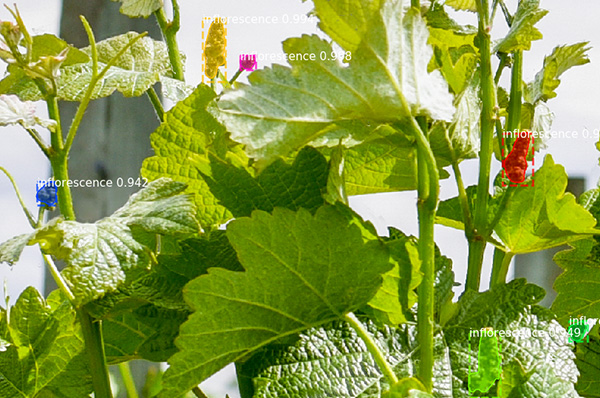Grape expectations: Lincoln Ag's yield analyser progressing well
The MBIE-funded Grape Yield Analyser (GYA) research programme, now in its fifth year, is developing sensing technology and tools to support crop load management in grapevine production. The main focus for Lincoln Agritech’s work is developing sensor use for counting grape bunches and a Bayesian model for accurately predicting grape harvest yields early in the growing period.
One tool they are developing is a camera-based method for counting inflorescences, which are young grape bunches before their flowers turn into berries, to support early in-season yield assessment. In some New Zealand vineyards, counting inflorescences in November has replaced counting grape bunches at the pea-size berry stage in mid-January. Leaf density is still low in November and allows the technology to quickly assess inflorescence numbers, which has shown to be a good proxy for grape bunches later in the season.
CEO Peter Barrowclough says the system can detect very small inflorescences and is recording 93% accuracy in a calibrated model and 88% in a run not calibrated to the row when compared to manually counted grape bunch numbers.
“Lincoln Agritech is developing a second tool to support vineyard decision-making based on the developmental stage of the plant. Spraying inflorescences with sulphur to protect emerging grape bunches from botrytis infections needs to be timed accurately, for example, at the 60% flowering stage. We are able to assess the level of ‘flowering’ by calculating the percentage of open and uncapped flowers, or still closed. We begin by taking close-up digital images of inflorescences during flower maturation in December.”
The team uses hand labelled images to train a neural network (deep learning) to auto-segment the opened and closed flowers. The system has been tested with images taken in three consecutive flowering seasons (2018, 2019, and 2020) and showed good accuracy in determining the number of closed flowers compared to open ones. The team is now comparing the machine-learning tool with the assessment of inflorescence growth stages by viticulturists. They are in the process of publishing the results of this study in a viticulture journal.
The GYA programme is funded by MBIE with co-funding from the Bragato Research Institute and receives in-kind support from key stakeholders. The research is led by Lincoln Agritech and includes researchers from Lincoln University, University of Canterbury, Plant & Food Research, and CSIRO (AU).
Read more
Find out more about Lincoln Agritech's grape yield analyser.
Date posted: 14 June 2021

